Croatian Emergency Services On Land, At Sea, And Up Mountains
November the 23rd, 2022 - In this edition of How to Croatia, I'll take you through the ins and outs Croatian emergency services, be there a fire, sudden chest pain, a broken down car or an emergency out at sea.
Forget your 999s and your 911s. 112 is the number you’ll need to memorise when it comes to the Croatian emergency services. While we always hope no tragedy of any kind will befall us, the chance is always there. 112 is a free phone number which can be called 24/7 from a fixed phone (landline) or mobile phone to reach the fire department, to call for an ambulance, to contact the police or for rescue purposes.
While dialling 112 will get you through to the emergency services who will then put you through to the service you need. Calls to this number can be answered in English, German, Italian, Hungarian, Slovak & Czech, and Croatian of course.
The average time to answer a 112 call is a mere five seconds. An SMS (text messaging) service is also available for those with disabilities which may affect their hearing, verbal communication or understanding.
You can also dial the following numbers depending on the Croatian emergency services you require. These are also all free and can be called at any time, from any type of device:
192 - Police
193 - Fire department
194 - Emergency medical help
195 - Maritime search & rescue
1987 - Help on the road (HAK)
195 - Help at sea
Things to note
Among the various services offered by HAK, a particularly useful one for tourists is the English-language update on all current road conditions. The service also includes updates on border queues and ferry delays.
During the intensely hot summer months, wildfire breakouts are unfortunately becoming more and more common, especially on the coast and in the tinder dry scrub of the Dalmatian hinterland. It is of paramount importance that rubbish is taken away and disposed of properly. All it takes is a shard of glass glittering in the scorching Croatian sun or a carelessly tossed cigarette butt to set off a blaze that can become rapidly out of all control in such a dry, baked environment. It goes without saying that devastating wildfires can and do occur naturally in such temperatures, but anything we can do to prevent them starting should be in the forefront of our minds.
The Croatian Mountain Rescue Service (in Croatian, Hrvatska Gorska Služba Spašavanja, or HGSS) is also typically kept extremely busy during the height of the tourist season thanks to people attempting to hike up the Biokovo mountain in Primark flip flops, do a bit of free island hopping on a gigantic inflatable flamingo or doughnut, or even try swimming from Split to Brač. Can’t be that far, can it? Oh yes, it can.
HGSS ran a funny campaign a few years ago in a humorous attempt to prevent people from succumbing to their ill-informed, ill-equipped and even more ill-experienced adventurous side, but despite their best efforts, people end up in all sorts of sticky situations with each and every passing year, particularly in summer. Why anyone would ever want to try to climb a rugged, imposing Dalmatian mountain which has probably claimed more than a few lives over the centuries in 3 euro flip flops and armed with half a bottle of flat Coke for hydration in the horrific August heat I don’t know, but maybe I’m the weird one.
For more on the practicalities of moving to and living in Croatia, make sure to keep up with our How to Croatia articles in our lifestyle section.
Croatian Mountain Rescue Service Rescues Goat from Sheer Vis Cliffs
June the 17th, 2022 - The Croatian Mountain Rescue Service (HGSS) is usually busy saving tourists from precarious mountain situations at this time of year, with more and more strange and often highly dangerous escapades being cleaned up after as the tourist season goes on.
From tourists attempting to climb Biokovo in Lidl flip-flops without any water on them during hot August afternoons to people who thought they'd be able to skip the ferry and use a giant inflatable flamingo as their mode of transport to get from Makarska to the island of Brac, the Croatian Mountain Rescue Service are known to use humour to cope with what must be absolutely frustrating situations.
Goats, however, aren't usually the type of mammal being rescued by this praiseworthy group of people.
As Poslovni Dnevnik writes, the Croatian Mountain Rescue Service branch in Split had an unusual intervention to deal with recently. The person on duty at the time received several calls about a goat that appeared to have become somewhat stuck on a sheer cliff above the sea. As there is an attractive cave nearby which is visited by a large number of tourists, people noticed the unfortunate animal and naturally became worried about the precariously positioned goat and alerted the rescuers.
following a brief search for the exact location on the rocks (calls from worried individuals were made to several different places), members of the Vis Branch of the Croatian Mountain Rescue Service arrived by boat to the foot of a sheer cliff, and upon looking up, they saw their stuck individual - not a human, but a goat.
A veterinarian on the mainland was also contacted and concluded that the goat would not survive if it remained stuck there on the cliff, and that it was unable to climb alone. Two rescuers climbed up the rock, pushed the goat down into the sea, and the animal was then pulled aboard, rescued, and taken back to safety, they wrote from the Croatian Mountain Rescue Service.
In the end, the goat was accepted by a local Family Farm because unfortunately there are no veterinarians on the island.
Three members of the Split branch office and six members of the Vis branch office took part in the action to save the goat.
For more, check out our dedicated lifestyle section.
HGSS Gives Important Advice to Hikers Ahead of the Season
June 4, 2022 - Summer is the most popular time of year for hiking in Croatia's national parks. However, many are unaware of the unpredictable conditions that could put one or more lives at risk, which is why Mario Saban from HGSS has decided to dish out some important advice for those interested in hiking in national parks.
The Croatian Mountain Rescue Service (HGSS) appeals to all mountaineers and people who come to Velebit and the mountain in general not to underestimate it because the mountain rarely forgives mistakes, says the director of the Velebit Nature Park Public Institution, HGSS member Mario Saban.
"Mountains rarely forgive mistakes - when you go to the mountain without enough water, without prior information about which way you will go, how long it will take. It can all be fatal," Saban said during a presentation to journalists about the tourist potential of Plitvice Lakes, Udbina, and Gospić under the slogan "Lika is a character (medicine)" and the hiking event "Three days of three peaks" - to Mrsinj, Ozeblin, and Oštra.
He recalled that last year German scouts aged 12 to 15 came to Velebit without following the forecast.
"It was nice and sunny weather, in the middle of summer, they started short-sleeved. But, as Velebit is quite unpredictable, the weather deteriorated in a couple of hours, the scouts got lost, they didn't know where they were going, and launched an HGSS search operation. If we didn't find them until later that evening, they would surely freeze by morning."
"When you go to the mountain, you need to prepare for it, you need to know where you are going, and how long you will stay on the mountain. You should always contact someone and inform them where you are going. It is also important that you never go to the mountain alone," said Saban.
Adequate clothing and footwear are also important, he added. "It's a well-known story that tourists know how to go in flip-flops because they think we're just going for a little walk."
"They start in inadequate clothes, the rain gets them wet quickly, it gets cold on the mountain, it's humid and they catch a cold easily," says Shaban.
"The basis of mountaineering," he pointed out, "is to dress in layers and put on sturdy hiking shoes."
Bring caloric foods and energy bars
You must always have a first aid kit and a mobile phone in your backpack, he said. "Never drink alcohol because people think it will warm them up a bit, but the opposite happens, alcohol does not heat up, but you quickly get a feeling of warmth, circulation goes, you get even colder and that is the cause of the cold.", he warned.
"The standard is to bring something caloric to the mountain, such as bacon, food that gives the body carbohydrates so that you can withstand walking. Energy and vitamin bars are also recommended.
It is always better to drink isotonic drinks than to drink clean water because by taking a large amount of water from the body you excrete a certain amount of electrolytes and salts, and without them, the body loses strength. That's why you should always bring high-calorie food and sweetened drinks to the mountains.", he recommended.
Shaban recalled anecdotes about the rescue operation of a Korean tourist in the Plitvice Lakes National Park.
The tourist photographed over the edge and fell down. He hung on the branches, clinging to them like a cat. When I came down for him, I had to break a lot of branches in the rescue operation, and he asked me at one point - so break the branches, is this a national park?"
''We also saved a paraglider on Visocica. He stayed on the beeches that are more than 35 meters long and hung helplessly. When I came up for him, his wing was left in the canopy. I secured the paraglider, and with a knife cut the threads that hold the wing, and he got angry with me and asked me why I didn't go up more so that I could lower his wing as well'', Saban recalls.
Saban also says that people call them to pull them out of the snow when they drive across Velebit, but this has become frequent, so now they do not respond to such calls if no one is endangered. "Let them call the towing service," he said.
HGSS's Gospić station has an average of about 35 rescue operations a year.
Source: Večernji List
For more, check out our lifestyle section.
HGSS Rescue Helicopters On Standby as of 1 May
ZAGREB, 16 May 2022 - An increasing number of mountain climbers and tourists in non-urban areas made the Croatian Mountain Rescue Service (HGSS) put its helicopters on standby as of 1 May, one month earlier than usual and they will remain on alert until 30 October, HGSS reported on Monday.
HGSS noted that this is the first time its rescue helicopters were put on alert so early in the year as they are usually made available for standby service as of 1 June.
"However, because of the continual increase in the number of mountain climbers, recreational hikers and tourists in non-urban areas, it is necessary to put helicopters on stand-by earlier and that will last until 30 October," HGSS chief Josip Granić said.
He added that HGSS is working on forming additional teams in order to be able to react at any time of the year including prior to the peak tourist season and postseason. Soon helicopters will be on alert throughout the year.
For more, check out our lifestyle section.
Damir Trut: Unit for Maritime, Underwater and Cave Rescues Established
March the 8th, 2022 - A brand new diving Croatian unit for maritime, underwater and cave rescues has been established according to Civil Protection Directorate director Damir Trut, who spoke about it for Morski TV recently.
As Morski writes, Croatia has a very long coast and is one of the most indented countries in the whole world due to its complex network of islands, bays and peninsulas. As a result of its geography, it has become increasingly attractive to boaters, divers, as well as other guests who want to enjoy the Adriatic Sea in ways that go beyond having a swim at the beach. If we add speleology exploration to such types of tourism, and then add rivers and other freshwater areas on land, then we realise that the organisation of rescue units trained and equipped for rescues in diverse and often very dangerous conditions is more than necessary.
Due to the growing need for such a service, the newly formed specialist diving group within the water/maritime rescue module of the State Civil Protection Intervention Unit was presented to the public recently. The director of the Civil Protection Directorate of the Republic of Croatia, Dr. Damir Trut, revealed more.
There will be centres of special diving forces in Zagreb, Split, Rijeka and Osijek, says Damir Trut
''The range of tasks that Civil Protection Directorate carries out is really diverse. The State Civil Protection Intervention Unit is a unit that has the highest rank of equipment and training in all of Croatia for the care and assistance of the population. It has multiple segments; for rescue from rubble, rescue from water, rescue in contaminated areas, and the list goes on. These are all areas we've strategically improved and planned to add more to over the years.
In addition to the special training of rescue people, additional equipment is needed to make the job faster, more efficient and safer. All the conditions in which rescuers work are the most dangerous of all. Water rescues are another element that lifeguards need to actively work on. They must have good training and have proper licenses, but also good equipment in order to be able to help those most in need.
What is the number of members and where will these people and their centres be stationed?
''The diving unit is within the water rescue unit, which also works in floods, but we've expanded it to cover maritime and vessel rescue missions in the tourist season, which is something that is increasingly needed. These units are located in four locations: Zagreb, Rijeka, Split and Osijek. At the Zagreb location, they have three more elements: the media part of it all and the technical team that deals with caves, mapping and the use of the most sophisticated technical equipment, such as robots or scanners. Today, this technique gives us information from greater depths on how and in what way something or someone is endangered.
There are two teams of eight members at each location, meaning the sixteen most capable and skilled divers, who go through different levels of licensing and who are then able to do such jobs. Much of this is funded by EU projects. The Slovenian water rescue unit has a robot that we don't have yet. We will also procure this equipment, we're just waiting for the tenders to open and then we'll start heading in that direction ourselves, too.
Human casualties do tragically occur, and unfortunately there have already been such situations in the Croatian Adriatic...
This is especially true during the tourist season. Accidents do happen then. And we in Croatia have various organisations under the coordination and auspices of the Coast Guard, which jointly participate in rescue operations at sea. This segment of rescue from the depths was not well covered, so we analysed and came to the conclusion that it is necessary to train and equip a unit that can perform very demanding tasks under the sea and at depths of over a hundred metres.
While we didn't have such a unit, there were situations such as an unfortunate situation in the Sibenik area when special forces from Lucko in Zagreb had to wait to retrieve the body of the injured fisherman, because it was very inconvenient to dive down to the wreck itself. Will these types of interventions be easier now?
We did and we still do have divers who can carry out such tasks, but they weren't properly organised. They existed within different organisations and bodies and as a result it was very difficult to carry out an organised rescue. It's important for the unit that it is organised and has a sufficient number of people and that they also have backups and replacements.
You've recently done exercises in this particular segment. What did they look like?
''We did it through several elements, we wanted to see if all we'd discussed could be harmonised with the procedures according to which the divers will continue to work. We carried out the rescue of someone who was drowning in a river, then we undertook a cave rescue and dealt with the rescue of people from a vessel that had sunk out at sea. We also did the technical part of filming that ship and making a 3D model of the ship so that we could analyse and see from the land everything that was needed. After the 3D analysis, a 3D model can be printed, so that literally on the table in front of you, engineers who are not divers can provide advice or prepare all the technical elements needed.
In addition to all of that, do rescue divers also use submarines, underwater and flying drones, as well as amphibious vehicles?
Yes, they do. A diver without equipment is still a diver, and with the equipment he is a specialist who can quickly and efficiently provide assistance to a victim and in the particular area in which an unfortunate event has happened.
Have there been rescues so far in caves and in flooded areas?
Yes, the response to such situations has so far been mostly provided by the Croatian Mountain Rescue Service, but that still isn't enough, because they don't have the capacities for a longer and stronger rescue. We've invited all those who are the best at this to the personnel organisation of the State Intervention Unit. So we have members of the police, firefighters, and the Mountain Rescue Service. Everyone on the team is a volunteer. They're placed on call as needed, as it isn't necessary to have active professionals all the time,'' concluded Damir Trut.
For more, check out Made in Croatia.
Croatian Mountain Rescue Service Turns 72: 'We Only Have One Wish'
February 24th, 2022 - The Croatian Mountain Rescue Service was founded in Zagreb 72 years ago. Nowadays, they have 1148 volunteers deployed in 25 stations all over the country
‘For 72 years now, a call to any member of the Croatian Mountain Rescue Service (HGSS) has been a call to action to the entire service. In those moments, members of the HGSS put their lives aside so that they can save others. That is why we don’t ask for cards and gifts on our birthday, but we do ask one thing of you: educate yourselves, inform yourselves and get yourselves appropriate equipment before going on an adventure in nature. It’s the best way to ensure we don’t meet. If you found yourselves in the thick of it anyway, you can count on us’, said the members of the HGSS on their birthday.
On this day 72 years ago, the Founding Assembly of the Mountain Rescue Service in Croatia was held in Zagreb. The idea of a team of volunteers saving lives is ingrained in each of the 1148 volunteers of the HGSS, deployed in 25 stations all over Croatia. They’re all committed to a single mission - prevention, education, rescue and search for the injured.
‘Since the service was established, the HGSS has participated in over 10,000 rescue missions. Last year alone, we carried out 754 rescue missions and 150 interventions. Our crews took part in 196 searches, 27 actions on water and 48 actions in ski resorts. In addition, at the end of 2020 and the beginning of 2021, we faced the greatest tragedy since Croatia's independence: the disastrous Banovina earthquake. HGSS is still active in that area as an intervention force, and is a fundamental component of the civil protection system and a part of the Homeland Security system. We visited 1420 locations, conducted 2164 preventive visits, successfully carried out 683 high-altitude missions and 39 operations involving search teams with search dogs who located people and animals under the rubble’, said head of the HGSS Josip Granić.
‘Members of the HGSS are volunteers - primarily alpinists, but also speleologists, high-altitude mountain climbers and skiers trained in first aid and all mountain rescue techniques, including helicopter rescue, search operations in inaccessible terrain, and operations involving search dogs. They give their knowledge and precious time unconditionally and at any given moment in order to save the lives of others. People with big hearts and the wish to help others are the biggest treasure we have. Without them, there would be no HGSS. This is why we again appeal to all citizens and nature lovers - inform yourselves and gear up before an adventure in nature. Look after yourselves, and we’ll keep looking after you’, said Granić.
Happy birthday, HGSS, and thank you for all that you do!
Dog Protects Injured Mountaineer on Velebit's Vaganski Vrh, HGSS Saves the Day
January 3, 2022 - HGSS members performed a complex and challenging rescue operation on Sunday night. After almost 13 hours, they pulled out an injured mountaineer, who slipped with his Alaskan Malamute North to a depth of 150 meters on Vaganski Vrh.
Fortunately, two friends were with the injured mountaineer, who immediately called for help and were in contact with the rescuers at all times, report 24 Sata.
The head of the HGSS Gospić, Josip Brozičević, states that the mountaineers were experienced and had all the necessary equipment, but a combination of unfortunate circumstances led to this accident.
"The mountaineers climbed the Velebit hiking trail to Vaganski vrh. When descending, the dog was afraid to cross the icy surface. Its owner received it to pass it on. The moment he wanted to lower him to the ground, the dog began to slide on the icy ground. He was on a leash and tied to the owner, and as he slipped into the pit, he dragged his owner behind him," said Brozičević.
HGSS members received a report at 6:30 pm, and 27 rescuers from Gospić, Zadar, Split, and Istria reached the injured mountaineer and dog that had been in the pit for five hours. Unfortunately, the action on the inaccessible terrain, on the highest peak of Velebit, was hampered by snow and ice, and landslides and broken trees blocked the trails.
"The dog was curled up next to the owner in the pit the entire time; he warmed his owner with his body, thus preventing the mountaineer's significant hypothermia who suffered a severe fracture of the lower leg and ankle when he fell. In addition, he looked quite sober mentally and physically," stated Brozičević.
After rescuers pulled the victim and the dog out of the pit, the hypothermic mountaineer was first warmed, and his injured leg immobilized. His dog North, who passed without injuries, did not want to be separated from the owner for even a moment. Instead, he curled up on him while on a stretcher, while rescuers lowered him from the mountain on steep and icy terrain Transportation began at 0:20.
"When we started with the transport, we saw that it would not be possible to transport the victim and the dog together. Since the dog was unharmed, he was taken over by one of the rescuers, but even then, he was near the owner," said Brozičević.
After more than seven hours of transport, the injured mountaineer was taken to the ambulance, to the Gospić General Hospital, and then to the Zadar Hospital, where he underwent surgery.
HGSS members warn that hiking is dangerous in winter conditions, regardless of how experienced the mountaineer is and how well they prepare for the route. This accident has shown that only one wrong step is enough, after which there is no going back. Vaganski vrh is visited almost daily by mountaineers. The only exception is when the most severe winter conditions prevail on the mountain.
To read more about lifestyle in Croatia, follow TCN's dedicated page.
Missing Person Peruća Lake: Body Found After Four Day Search
September 22, 2021 - The missing person Peruća Lake search sadly ended with the discovery of the body of Dominik Branimir Bilobrk who went missing last Saturday.
The four-day search for the 24-year-old Dominik Branimir Bilobrk sadly ended with the worst outcome possible.
As TV network RTL reports, police confirmed that the missing young man was found dead close to the place where he left to swim through Peruća lake, an artificial lake in Dalmatia. A little over an hour away from Split by car, Peruća is the third biggest lake in the entire country.
„The boat went to pull him over and bring him to land where investigation and identifying of the victim will take place. The family is already here. They await in sorrow“, said RTL on its website on Wednesday afternoon.
As Jutarnji List reported, Dominik Branimir Bilobrk from Obrovac Sinjski (half an hour drive away from Peruća) disappeared on Saturday. At the time of his disappearance, he wore short camo cargo pants, a short-sleeved black T-shirt, and black sneakers. The description said he was of „stringer physical build, “ and he drove away from his house in a Fiat brand car.
Big search for Bilobrk started on Monday morning around Peruća lake and its surroundings. Police, along with the Croatian Mountain Rescue (HGSS), from Split's station, and HGSS divers from across Croatia joined the search to find the missing 24-year-old. Dogs, drones and boats were used to find the missing young man. Along with professionals, ordinary citizens and Bilobrk's neighbors took part in the search too. Dogs, drones, and boats were used in hopes of finding the missing young man.
Following the interview of HGSS's search leader Ante Jukić, Slobodna Dalmacija wrote on Monday that both the car and the clothes dropped a kilometer away belonged to Bilobrk.
„Every eye on the field helps. The search is specific because we are on a suspected minefield, so we have to pay attention“, said Jukić on Monday, explaining how both civilians and professional troops must be careful in that area.
The finding of th clothes and cars shifted the focus of the search to the lake Peruća. Unfortunately, the search ended with a sad ending, as the exact reasons for Bilobrk's departure remain unknown.
Nestali.hr, a governmental site where Croatians can report missing people, states that in the last 23 years, there have been more than 24 000 missing people reported.
The majority of these cases, around 70%, are related to the war in the 90s.
For more news from Croatia, follow TCN's dedicated page.
Croatian Media Report New Details in Case of Mystery Krk Woman
September 22 Update at 13:00 - Official Croatian Police Statement confirming the identity of the mystery woman.
Story update, 09:00 September 22 - Mystery Woman in Croatia: Daniela from Slovakia?
September 21, 2021 - New details have emerged in the case of a mystery Krk woman. An empty wallet has been found, and a local shopkeeper has revealed the woman visited her kiosk.
Nine days after the discovery, the police failed to establish the identity of the woman on Krk who is currently in the Rijeka Hospital.
The woman was found by members of the HGSS on Sunday, September 12, between Rudin and Čižić, and she was exhausted and dehydrated. Although so far it is only known that she speaks fluent English, in a conversation with a saleswoman at a nearby kiosk, Vecernji List learned that the woman allegedly also speaks Croatian.
A saleswoman in Krk said that when she visited her kiosk, she spoke Croatian, and she also knew how to ride the bus on lines around the island.
24 Sata reported that Czech media revealed that the could be Slovak. The portal tn.nova.cz transmitted the testimony of Czech tourists who claim to have met her.
"I met her on Thursday, September 9, in Drvenik, near Makarska," a reader who was on vacation in Croatia with her husband told the Czech portal.
"She told us about how she travels and that she is retired, and her friends are still working. So she went on the trip alone. Because she was afraid of a 14-day quarantine upon her return to Slovakia, she turned off her phone and removed her SIM card," they added.
"She also wanted to go to Lika, which is still far from the island of Krk. She was very intelligent, she told us that she had been in England for some time, so she spoke English well," the tourist concludes.
"I can confirm that we received information about the woman from the witness. We forwarded them to the Croatian police and, if necessary, we will help in the investigation," said the spokesman of the Czech police, David Schön.
Earlier today it was reported that the police found the woman's backpack on the shore quite far from where she was found.
However, the contents of the backpack did not provide investigators with the desired information about her identity. In addition to mosquito spray and some other small items that every tourist would take with them on a trip, a wallet was found in the backpack, but without documents and without money. This is an important detail because it is unusual that there is nothing in a wallet.
Police have repeatedly sent an appeal to the media for help to find anyone that recognizes the woman. International media also picked up the news.
British media have already written about the woman on several occasions, and the story was also published by CNN.
Daily Mail reporters spoke to the fisherman who first spotted the woman.
"In English, she shouted 'please help'. As it was difficult to approach the area where she was, and we were in a boat, we called the rescue service," the fisherman said.
An investigation into her identity is still ongoing.
If you have any information about the lady's identity, please contact us at This email address is being protected from spambots. You need JavaScript enabled to view it. and we will pass it on to the relevant authorities.
For more on the incredible work of the Croatian Mountain Rescue Service, meet some of its heroes.
Rescue Photos & 'Scottish Accent' of Mystery Woman on Krk, Croatia
September 24, 2021 - Update at 22:00 Dana Adamcova: New Details, Chat with Mystery Croatia Woman Family
September 22 Update at 13:00 - Official Croatian Police Statement confirming the identity of the mystery woman.
Story update, 09:00 September 22 - Mystery Woman in Croatia: Daniela from Slovakia?
September 21, 2021 - The extraordinary story of the English-speaking mystery woman on Krk with no memory continues to be unsolved. Some small additions to the story - a possible Scottish accent and some rescue photos provided by the Rijeka Croatian Mountain Rescue Service.
It is a story from Croatia's biggest island which has gone all over the globe and yet has yet to provide a positive identity of the mystery woman on Krk, who was rescued from a remote part of the island. An English speaker, but with no memory of who she is or what happened to her. National media appeals looking for help to identify her have become international appeals, with publications such as CNN, Fox, the Daily Mail and The Guardian all featuring her story and the photo below. Almost 10 days after she was rescued, her identity has still not been made public, assuming she has even been identified.
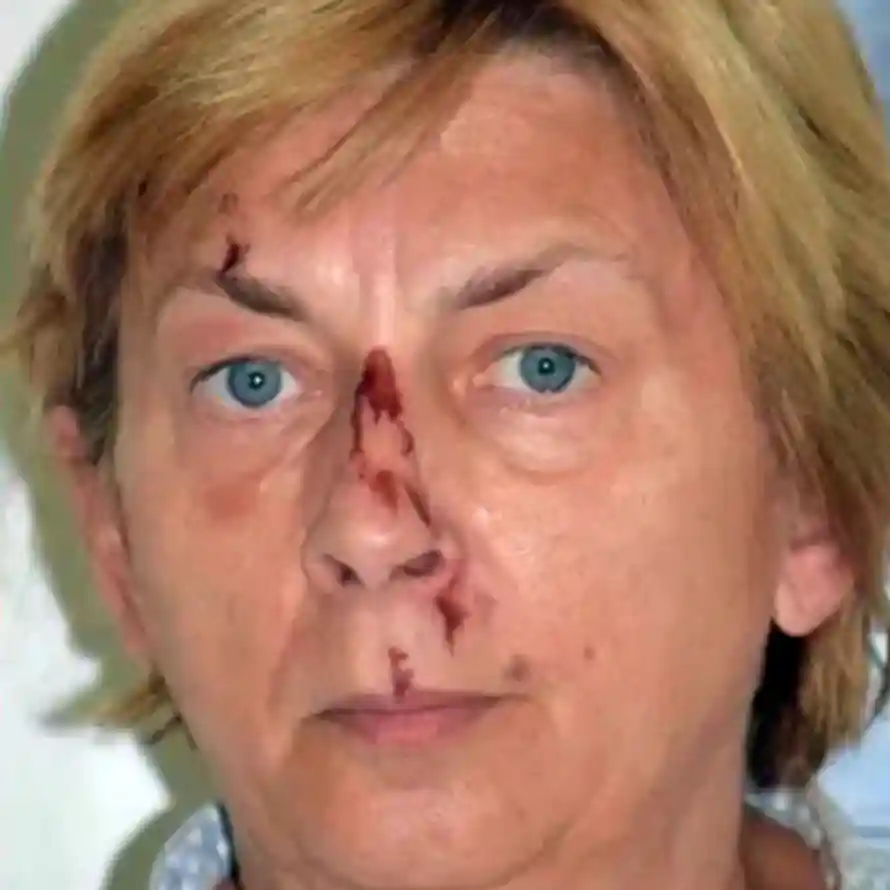
In a Facebook post, the Rijeka branch of the Croatian Mountain Rescue Service informed that they had received a call at 09:00 on the morning of September 12 to assist an injured person who could not be rescued by sea. The woman, believed to be in her 60s, was alone on a remote and very inaccessible part of the island of Krk, near the beach of Rudine. A local fisherman had seen her there the night before, then once again the following morning. According to the Mail Online, the following morning, she called out:
'She was yelling in English 'please, help'.
A team of 12 Croatian Mountain Rescue Service workers immediately set out to assist her.
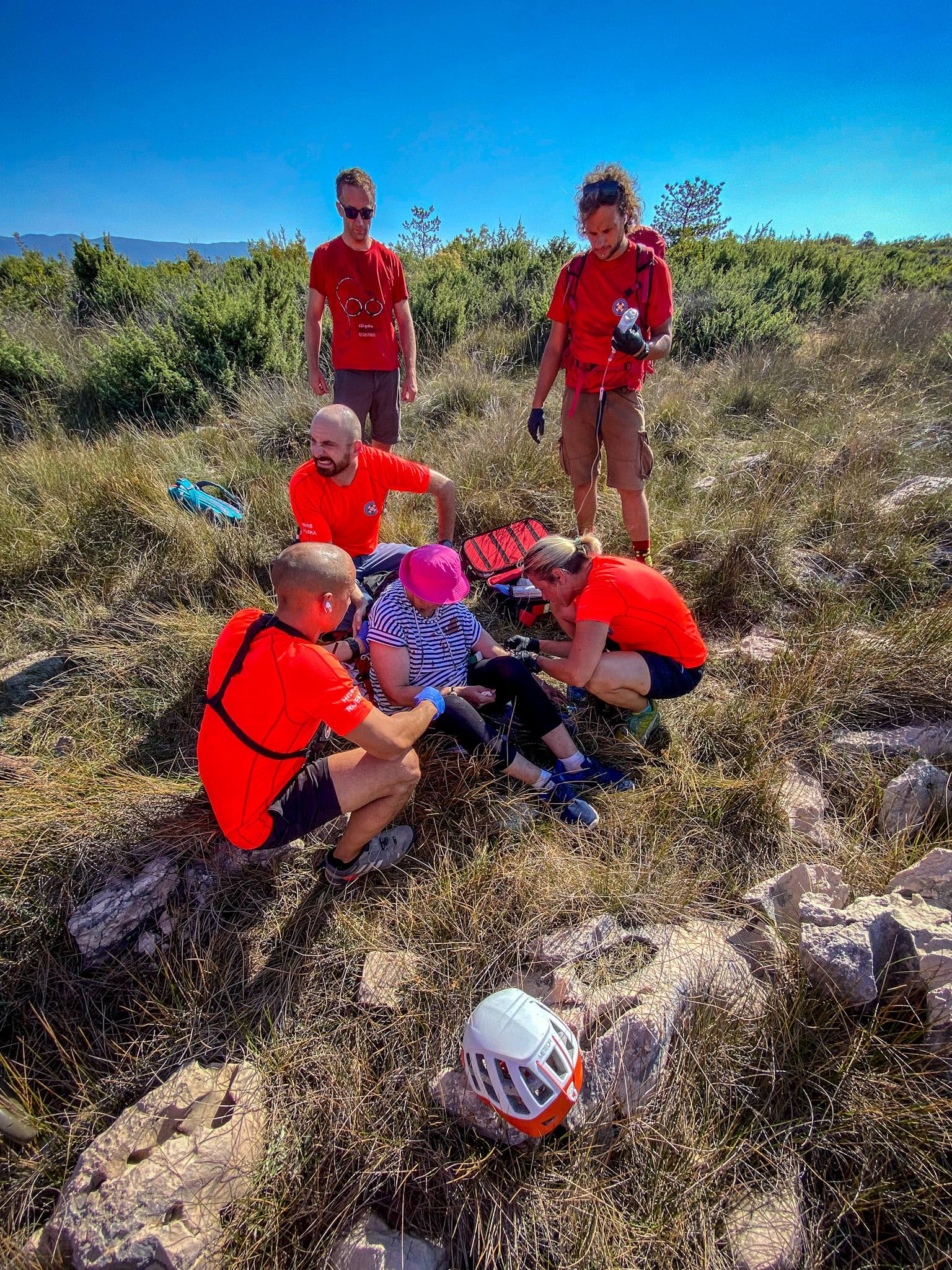
They set out with 3 vehicles but had to park them some way off due to the rugged terrain. They found the English-speaking woman weak and disorientated, and they carried her by stretcher back to their vehicles. She was then handed over to the Emergency Medical Services and on to hospital in Rijeka where she is currently recovering.
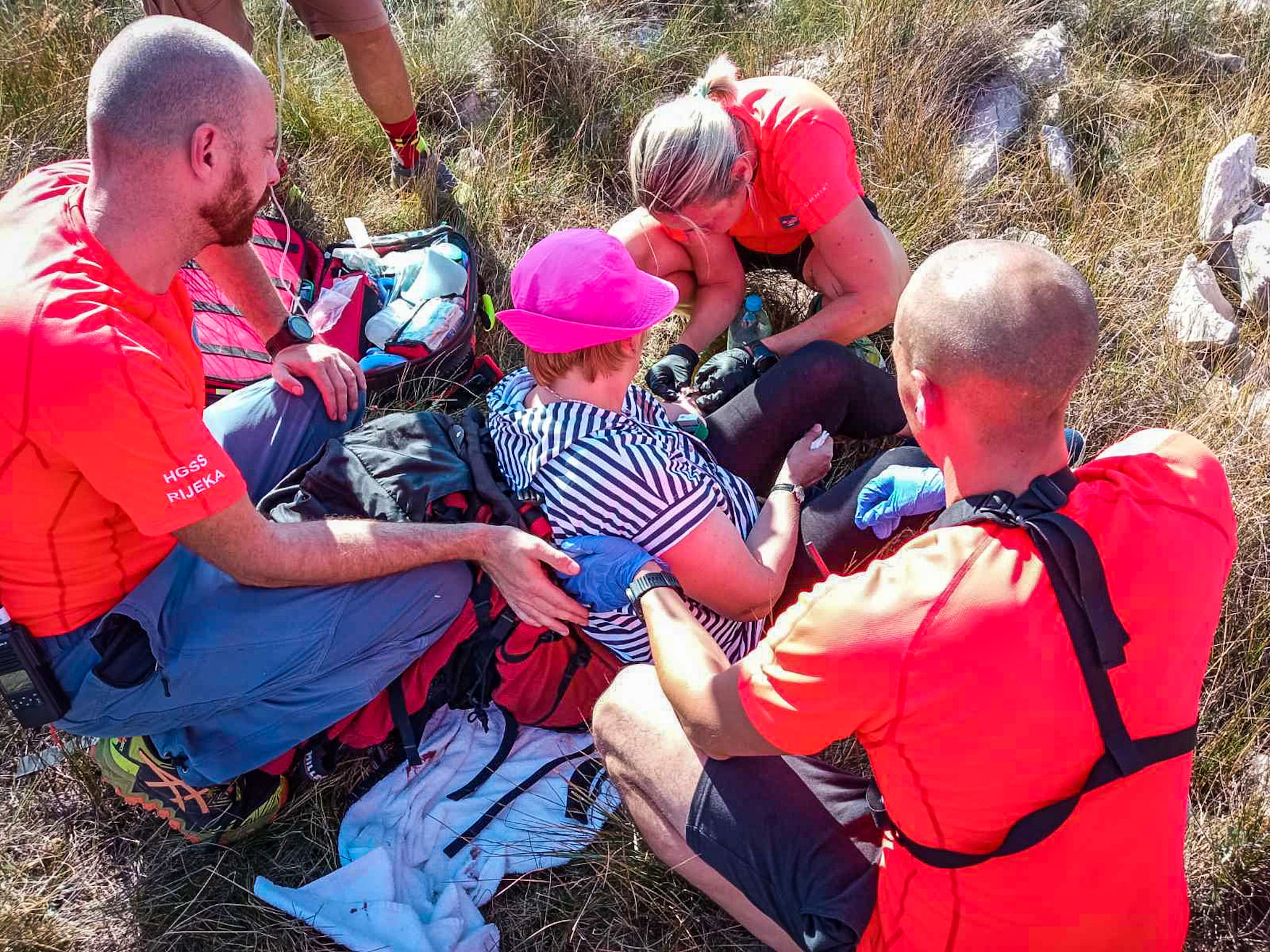
The woman apparently has no recollection of who she is or how she got there, and there were no identifying documents in her possession.
One very strange aspect of this very strange story, especially given its global exposure in an era of social media, is not only that she has yet to be identified, but also that there is not any concrete information about the nature of her English accent. By identifying the accent as British, Australian or American, for example, the search could be narrowed.
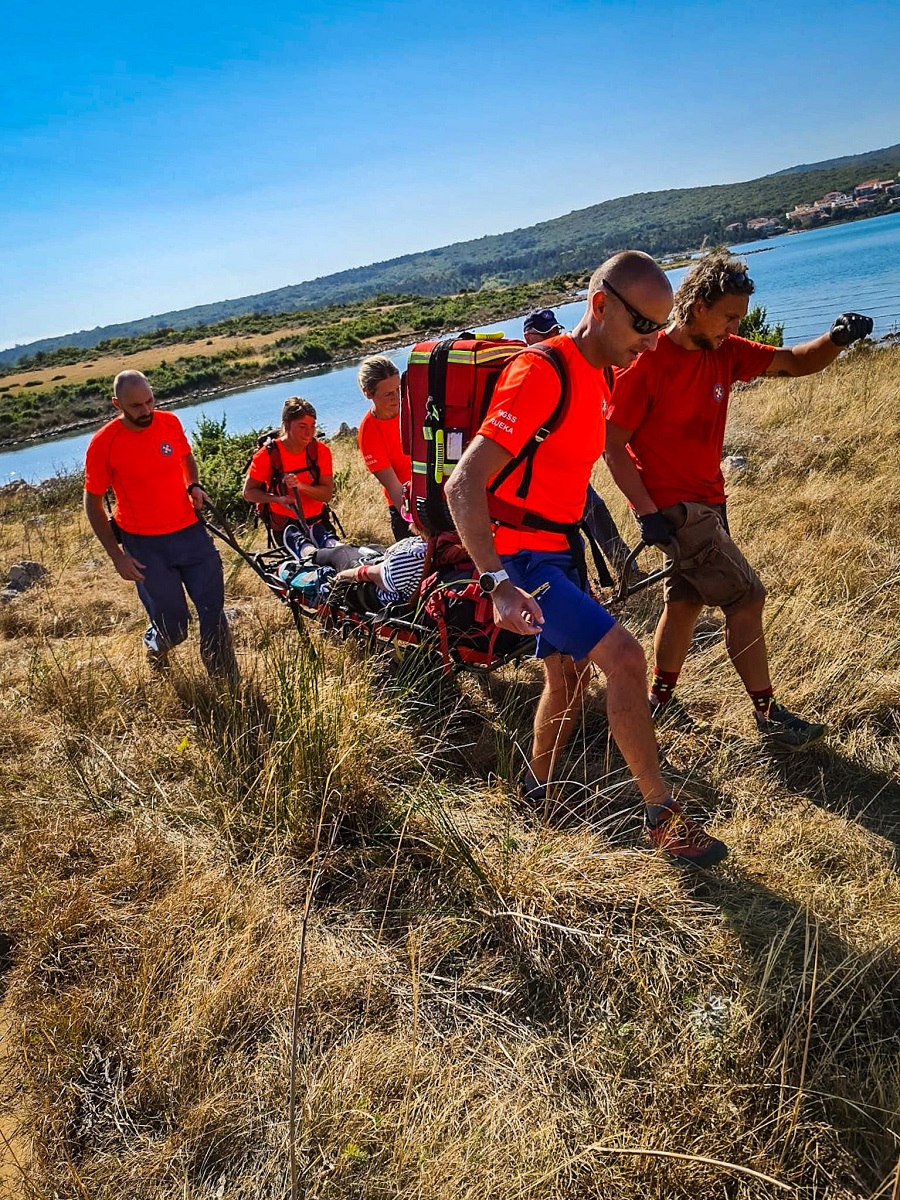
A small clue was perhaps given to the Daily Mail by the fisherman who found her.
"He said his wife had spoken to her and he could 'only guess that the accent could be Scottish'."
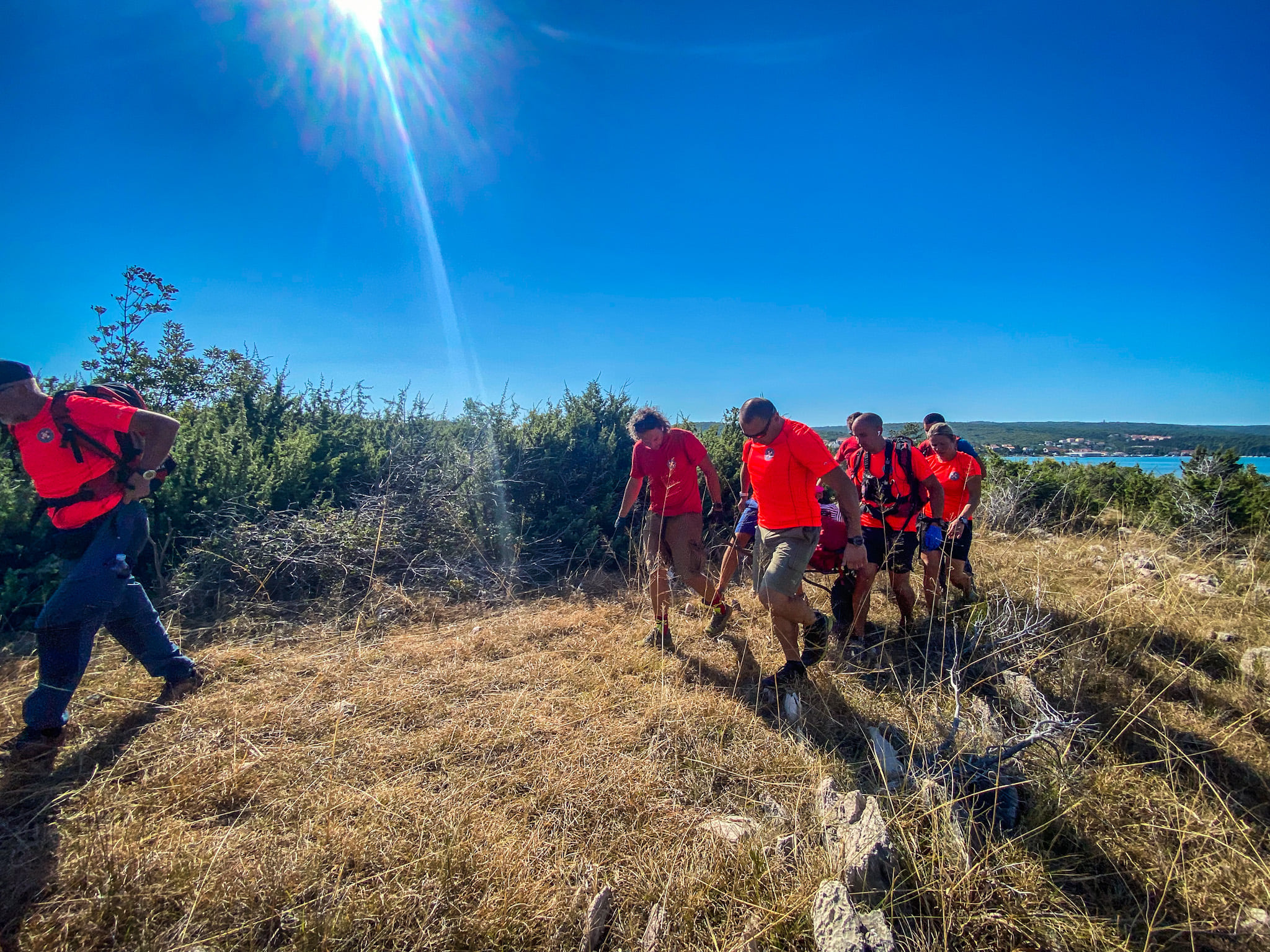
Even the social media commentators, usually so quick to give opinions, are quiet on the issue of her identity. With nothing yet officially confirmed, the main suggestion at this stage is that she might be from Whitby, in the north of England, not far from Scotland, but I should emphasis that nothing has yet been confirmed, and social media comments are hardly the most reliable of sources.
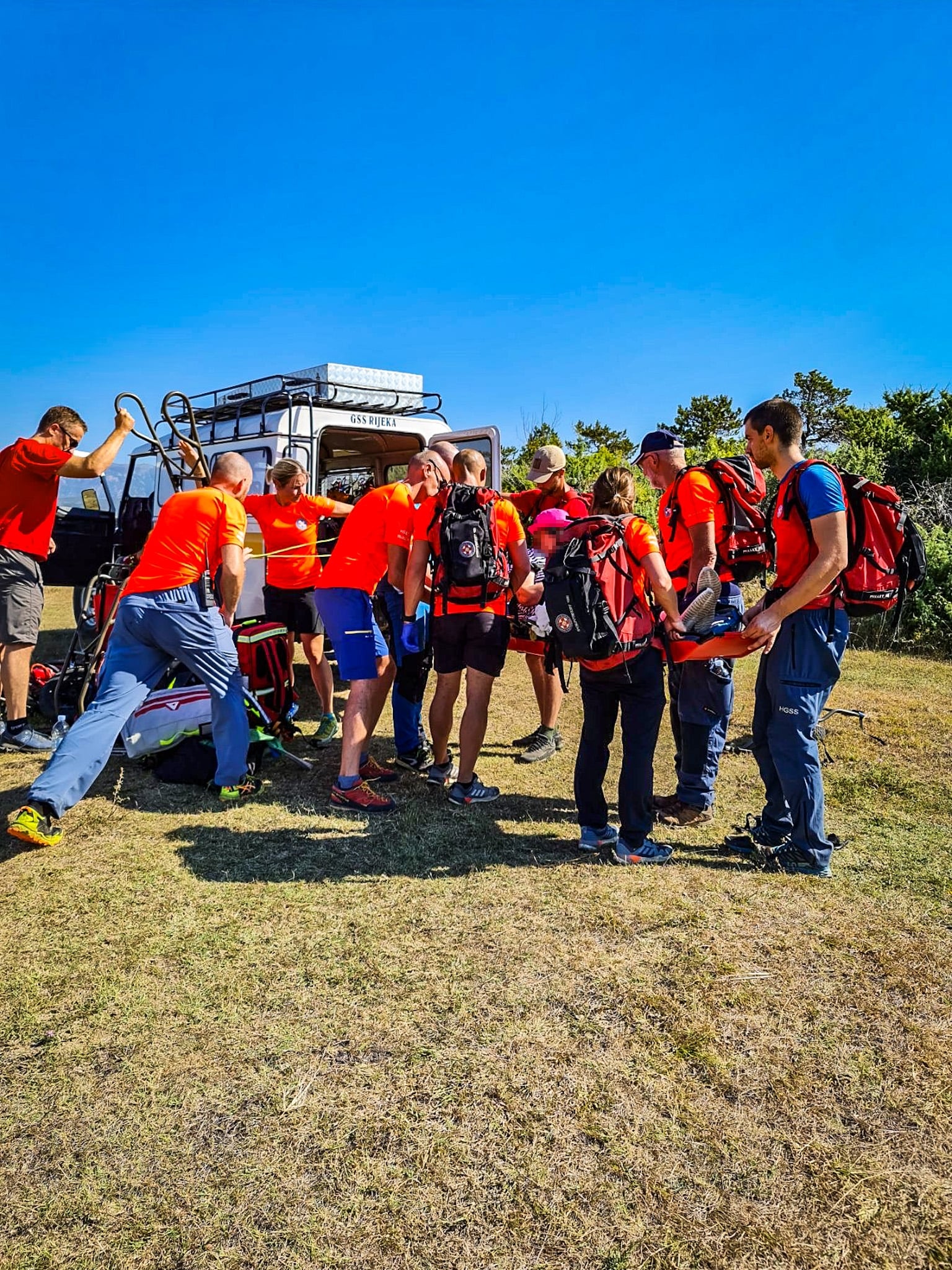
If you have any information about the lady's identify, please contact us at This email address is being protected from spambots. You need JavaScript enabled to view it. and we will pass it on to the relevant authorities.
For more on the incredible work of the Croatian Mountain Rescue Service, meet some of its heroes.


